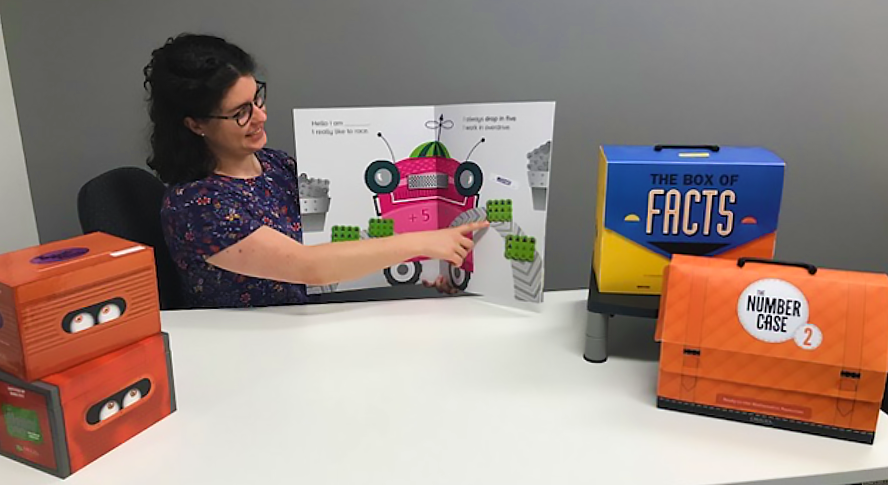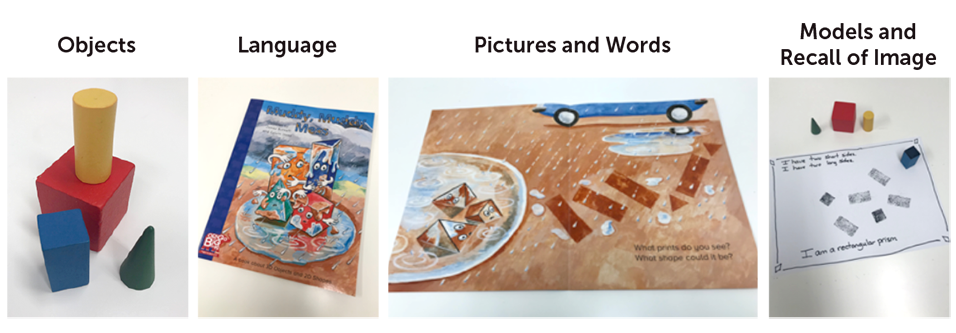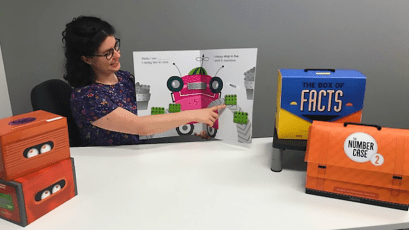Addition and Subtraction
Language in Mathematics: Visualization and Math Modeling (Series Part 3)
Visualization and math modeling as active thinking math strategies
This is the final post of our 3-part literacy series:
- Math and Literacy Part 1: Activating prior knowledge and using schema to make predictions
- Math and Literacy Part 2: Questioning as an Active Thinking Math Strategy
- Math and Literacy Part 3: Visualization and Modeling
Visualization and mathematics modeling is the third and final research-based strategy covered in this series. Click here to read Part 1 of the series. When students use or recall objects, pictures, or models during and after their math study, they are better able to explain their understanding to peers, parents and teachers. Visualization and models also give students a safe zone to draw upon their own senses in relation to math, and offer teachers the chance to gain insights into student understanding. It is vitally important to have think-aloud math discussions about how visual models/mental images enhance student number sense in the same way they do for literacy comprehension. Teachers who demonstrate the use of visualization and modeling help their students build interest, which then helps students understand how to monitor and adjust those visual models that are most effective for each math topic they study.
Teachers set the importance for using visualization and modeling
As with all good instruction, the teacher should be the model for thinking aloud using short examples and a variety of models, drawings, and descriptions of images they have experienced first-hand. This process works particularly well in guided math or number sense sessions during math workshop. (If you are unfamiliar with the practice, I have found Math Workshop, by Jennifer Lempp, to be quite teacher-friendly in getting started.) Gradually, students should be invited to share their own use of these models and explain their mental images from their personal senses/experiences. ORIGO Big Books and ORIGO Box and Book of Facts can be used to help with this task.

Geometry Modeling
Students should begin their study of 3D objects and visualizations by interacting with objects in their everyday environment. This allows students to learn how the objects feel and understand the attributes that each possesses. The ORIGO Big Book, Muddy, Muddy Mess is a great resource for this. In the story, the character objects are partially hidden and students have to visualize the footprints of each and match them to the object. As a follow-up activity, students can make their own footprint stamps and describe their objects to their peers.

Muddy, Muddy Mess is from the 2nd grade ORIGO Big Book set.
Addition and Subtraction Modeling
Students should use concrete objects to help them grasp addition and subtraction, laying the foundation for later, deeper conceptual understanding. The ORIGO Big Book, The Fun Machines offers a story where the characters are input-output machines following a particular rule. Students are challenged to use strategies such as count-on, doubling, and think-addition. For additional practice, students might use the visual models in ORIGO Box of Facts cards. Finally, students can attempt a recall activity by creating their own visual to represent their mathematics thinking.

ORIGO Box of Facts cards can used as visual models for math study.
Add more of these experiences to your classroom repertoire as the year goes on, using concrete objects, student language, and pictures with models, all of which help students progressively become more advanced in using thinking as an active math strategy.
About ORIGO Education
ORIGO Education is dedicated to making learning mathematics meaningful, enjoyable and accessible for all, offering Pre-K through Grade 6 instructional materials, and professional learning.
![]()




